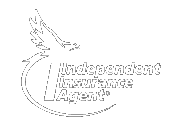As fall adorns our landscapes with vibrant hues of oranges, reds, and yellows, it's easy to get caught up in the season’s beauty. However, amidst the charm of autumn lies a hidden danger on our roads: deer collisions. With over $1 billion in damages annually and an average of $3,000 per repair, the financial impact is a startling reality, making it crucial to address this seasonal hazard. Thankfully, there are proactive steps you can take to protect yourself and your vehicle during these high-risk months of October to December.
Use High Beams Wisely
When driving at night and without any oncoming traffic, high beams can be your best ally. They help illuminate a deer’s reflective eyes much sooner, giving you extra time to prepare for a sudden stop.
Look for More Than One
Spotting a single deer is often a sign that more may be nearby. Slow down and remain vigilant, as deer typically move in groups, and others may follow closely behind.
Know When Not to Swerve
If a deer suddenly crosses your path, it's instinctual to swerve. Instead, brake firmly and stay in your lane. Swerving can result in more serious accidents involving other vehicles, trees, or guardrails.
Heed the Signs
Deer crossing signs are placed for a reason; these are high-traffic areas for deer. By reducing your speed in these zones, you allow yourself more time to react.
Be Mindful of Peak Activity Hours
Deer activity peaks during the afternoon but they tend to be harder to see at dawn and dusk. Exercise extra caution during these times, especially on rural roads or in wooded areas.
Use Your Seat Belt
Always buckle up. In the unfortunate event of a collision, wearing your seat belt significantly decreases the chance of severe injury.
Take Proper Steps After a Collision
If a collision occurs, move your vehicle to a safe location, switch on your hazard lights, and call the police. Avoid approaching the animal and contact your insurance provider to report the incident.
While deer collisions are a serious seasonal risk, the chances of encountering them can be mitigated through caution and preparedness. Stay alert, and treat every rural road or bushy stretch as a possible risk zone. If you have questions about your auto insurance coverage — especially regarding deer-related accidents — don't hesitate to contact our office.



